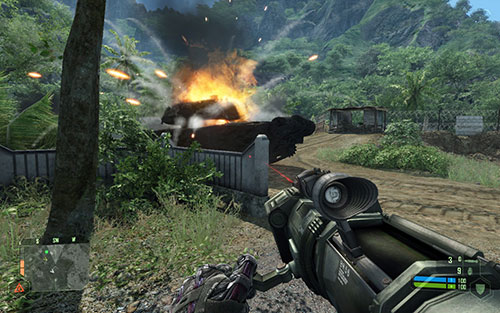Games
Unlike all other tests, games are tested in Microsoft Windows Vista Ultimate x64 SP1.
Game tests in our new test procedure are maximum close to real gaming conditions: we use the same resolution (1024×768) and relatively high graphics settings. On one hand, these settings weaken the effect of CPUs on performance, as they significantly load a graphics system. On the other hand, this situation reflects the objective fact that graphics card's performance is indeed much more important in most game than CPU speed. So we decided like this: if a game engine is really CPU-voracious, it will be noticeable even in high-res tests; if not, test results will reflect the real tendency in this software class.
What graphics options do we regard as high quality? The algorithm is simple: if the choice is limited to two options, we choose the one to raise graphics quality. If we have three or more options, we choose the one preceding the very best: the second out of three options, 3rd out of four, 4th out of five, etc. Of course we use the 32-bit color mode; vertical sync is disabled in video drivers; antialiasing is disabled.
We haven't found any information that Call of Duty 4: Modern Warfare supports DirectX 10, even with the latest patches. So we regard it as a purely DirectX 9 game with excellent graphics. Judging by test results of the previous game version (Call of Duty 2), its engine supports multiprocessing - let's hope that the new version hasn't spoilt this feature. The game still has only the 32-bit version, like most other games (our test procedure includes only one exception). The demo file is a recording of a real multiplayer game downloaded from Internet.
Call of Juarez initially did not support DirectX 10. But later on support for this API appeared as a separate application - "Call of Juarez DX10 Enhancements Pack" with an authentic (from the developer of this game) DX10 benchmark. Judging by test results from our graphics section, this game engine either does not support multiprocessing or does it poorly. The game has only a 32-bit version.
- Crysis (Patch 1.2)
- Benchmark: built into the game (CPU2)
It's the first "fair DX10" game in our test procedure: the engine has supported DireсtX 10 from the very beginning. Developers say that multiprocessing support is implemented so well that the game loads even quad-core processors. It's also the only game in our test procedure that has a 64-bit version (we use this version, of course). The game has several built-in benchmarks (demos), we use the one that loads a CPU more than a graphics card (according to its developers).
We use the "old" (Shadow of Chernobyl) S.T.A.L.K.E.R., so there is no DirectX 10 support in this test. However, according to developers, Patch 1.004 singled out physics into a separate thread. So theoretically, the second core should yield a performance gain (the third or fourth cores are out of the question). However, judging by CPU usage, performance gains are not very high. It's a 32-bit game, there is no 64-bit version.
It's one of the games in this test procedure, which has nothing to do with DirectX 10. It hadn't supported it initially, and it was not added in patches. Multiprocessing is implemented quite well: the total CPU usage reached 70% in a quad-core system. The game has only a 32-bit version, like most other games. It has an original benchmark: it imitates a multiplayer game - two computer players. So repeatability is out of the question here: the game unfolds differently each time. However, we found out that if a test round is rather long (20 minutes in our case), the average fps remains practically the same, even though each round is different. Thus, even though our tests are not identical, the main objective (stability of results on the same processor) is still reached.
Company of Heroes is not an "fair DX10"-game. DX10 support was added in patches. Judging by test results from our graphics section, this game engine somehow supports multiprocessing, but does it poorly and gives no real advantages. The game has only a 32-bit version. Perhaps, the built-in benchmark does not reflect the real game performance well enough, because it's a strategy, and the benchmark just plays a video clip with the graphics engine.
It's the second "fair DX10" game, which engine was initially written to use specific functions of DirectX 10. Developers announced that the engine supports multiprocessing. Results of some third-party tests let us assume that users of multi-core processors have a chance to get a real performance advantage. The game has only a 32-bit version. Perhaps, the built-in benchmark does not reflect the real game performance well enough, because it's a strategy, and the benchmark just plays a video clip with the graphics engine.
Conclusions
In our opinion, this version of our x64 processors testing methodology is the most complete of all we have ever used. The number of applications used in our tests has reached reasonable maximum. We account for interests of various groups of users, and each of them can find something important in published results.
We'd also like to caution experienced readers against overcritical treatment of our average scores: we hope you understand why they are necessary. It's a democratic test procedure: if you need a quick answer, you will get it. If you need detailed analysis, you will get it as well. It's very important for each reader to understand what he or she wants and not to get offended that other readers may want different things.
Write a comment below. No registration needed!







